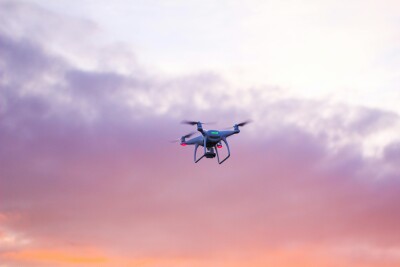The Consumer Technology Association (CTA) held its 50th annual Consumer Electronics Show in Las Vegas in early January of this year, and drones were a major part of the show. An entire section of the show floor was dedicated to the technology, and companies like Yuneec and GDU announced and showcased some new commercial UAV products.
For the second year in a row the FAA administrator Michael Huerta was not only present but delivered an important speech that provided a window into what happened in 2016 and presented a vivid and detailed roadmap for the agency in 2017.

The FAA also had a presence on the show floor of CES 2017.
Huerta reported on the many accomplishments of his agency in 2016 such as the implementation of Part 107, the first meeting on the Drone Advisory Committee (DAC), the First Unmanned Aircraft Symposium held in Washington D.C. and the first anniversary of the drone registry initiative. In the first anniversary of the drone registry, on December 21, over 670,000 UAV’s had been registered and of those 37,000 happened during the holiday season.
Huerta emphasized that the FAA saw the registration initiative as an educational tool too and that safety information was being distributed to anyone registering their drone in an effort to increase safety awareness amongst these new members of the aviation community. On Part 107 Huerta mentioned that over 30,000 applications for Remote Pilot in Command (RPIC) have been received and that 16,000 people have presented the test with a 90% success rate.
Huerta also highlighted the establishment of the DAC, a group of individuals from industry, government, labor and academia that, according to him, would allow the FAA to approach UAS use from different angles while taking into account various points of view and requirements from different sectors. Brian Krzanich, CEO of Intel is the head of DAC and their next meeting
will take place January 31
st, 2017 in Reno, NV.
He mentioned that 2016 was one of the most successful years in the agency’s history and praised the various agencies and individuals that contributed to this success. “I think it’s important to point out that the progress we’ve made; we’ve made because we have done it together.”
The FAA’s First Unmanned Aircraft Symposium also played a key role in the consolidation of the agency’s efforts towards the integration of shared airspace and Huerta was particularly proud of the fact that the entire endeavor was an “ultimate an exercise in Democracy”.
One key ingredient in the address was the firm intention of the FAA to act swiftly towards the integration of manned and unmanned aircraft action in coordination with industry, labor and academia. On this note Administrator Huerta proceeded to outline the efforts of his agency in 2017 to continue advancing the cause of integration of manned and unmanned aircraft and the need to harmonize global regulations to allow for standards to become more universal in every country as with civil aviation today.
Amongst the initiatives that Huerta and his team are putting forward as priorities for 2017 is to continue advancing towards a rule that would allow small UAVs to fly over people but also stretched that safety and security concerns will play a key role in the issuing of such a rule.
The agency is also working with NASA in the development and eventual deployment of an Unmanned Aircraft Traffic Management System (UTM) to manage drone traffic and to pave the way for the implementation of beyond visual line of sight (BVLOS) flights in populated areas and controlled airspace. This joint effort of NASA, the FAA and other government agencies goes hand-in-hand with the Pathfinder initiative which squarely aims at developing a drone detection system to dramatically cut back the number of drone sighting reports by pilots.
According to Huerta the year 2016 saw a spike in the number of such sightings with 1,800 reported sights in comparison with 1,200 in 2015. The joint effort involves testing technologies designed to detect unauthorized drone operations near airports and other critical infrastructure, or in controlled airspace. The results of such testing will be instrumental in the drafting of standards that can be used by airport operators across the country that are considering the use of drone detection systems.
At the end of his remarks Huerta announced the creation of a new Web Portal for all drone activities and mentioned that in the near future drone operators, users and pilots will be able to use this tool in any device, including PC, smartphones and tables to access information, register, filing pilot reports and obtain NOTAMs and FAA announcements.
“The progress we made last year it’s a great start but I think we all know it is just the beginning,” Administrator Huerta said at the end of his speech.
We couldn’t agree more.
















Comments